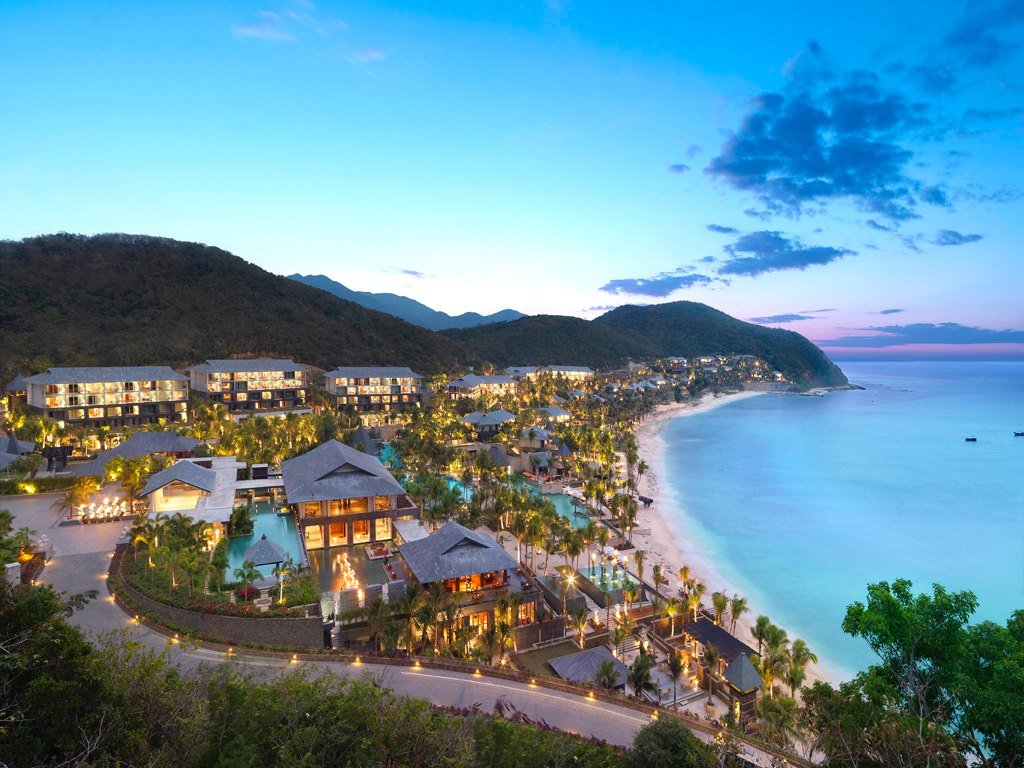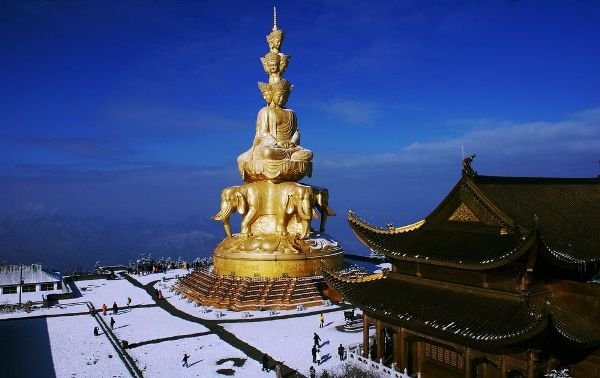Escape Brisk Beijing: Winter Destinations in China
Winter break is coming soon – whether in the form of Christmas holidays or Chinese New Year – bringing with it a legitimate excuse to procrastinate on travel websites. If you’re looking to stay in China this year and explore this treasure trove of tourist destinations a little more, here’s our list of the top five destinations you might want to consider:
Harbin (哈尔滨) (pictured above)
If you’re going to have to put up with the cold, you might as well enjoy the beauty that comes with it. This famous “Ice City” in northeastern Heilongjiang province attracts visitors from all over the world, and is best known for its annual Harbin Ice and Snow Festival. The festival boasts a spectacular collection of ice artworks, sculptures and lanterns. Starting in January, it will last for over a month, so there’s plenty of time to get yourself there.
If you’re a fan of winter sports, this is the place in China for such activities, and many a famous Olympic athletes were born here. Not only is there an indoor speed skating arena, but Harbin is home to the Songhua River, which is used as a multi-functional outdoor winter sports ground for swimming, fishing, ice hockey, skating – you name it.
Under the influence of neighboring Russia, Harbin offers a number of authentic Western restaurants – so you won’t miss out on hearty food from home by staying in the country.
Be aware that Harbin in winter is not for the faint-hearted, with temperatures dropping down to -31 degrees fahrenheit; but, on the bright side, you can definitely expect a white Christmas.

Jilin Changbai Mountain (吉林长白山)
Again, this one is for the brave souls who are looking to reap some rewards for suffering the cold. Changbai Mountain is located in the southeastern part of Jilin City, near the boundary of China North Korea. This dormant volcano is particularly beautiful in the winter, and one of the most spectacular sights is Tianchi (Heavenly Lake), formed in the crater of the mountain at an altitude of 7,182ft.
To the north of the lake you’ll find the Chengcha River, dropping from a 223ft high cliff to form the highest volcanic waterfall in the world – the Changbai Waterfall. One of the best places to see a panoramic view of the waterfall is Heifengkou, on the main peak; but you’ll have to be prepared for a long climb in the cold gale.
To get some respite from the cold, take a visit to the Changbai Hot Springs, less than 1.24 miles from the waterfall. It boasts brightly colored rocks, temperatures of over 140 degrees Fahrenheit and is known to be an effective treatment for ailments such as arthritis, dermatosis and general exhaustion. Make sure you also try the hot spring eggs that have become a local speciality!
Sanya (三亚)
If you’re looking to get away from the cold, Sanya on Hainan Island is probably one of the best places to visit. The city is known for its tropical climate, although during the winter break, it’s more of a pleasant 65 degrees Fahrenheit, rather than a sweltering Indian summer.
Some attractions worth visiting include, the 354ft Buddhist statue, one of the tallest statues in the world, the adjoining Nanhan temple, Yalong Bay (for some beach fun), Deer Turning Head Park (Lu Hui Tou Park), Butterfly valley and the Fairy Caves.
And if you’re feeling particularly fit, you can venture to the beach to play some volleyball with the Chinese national beach volleyball team.

Yunnan (云南)
Winter in Yunnan is pleasantly mild, and the area has a beautifully varied landscapes, ranging from tropical rainforests to snow-capped peaks.
One city that’s particularly popular is Kunming, known as the Spring City. It boasts beautiful natural scenery, a rich historical heritage and colorful folk customs. Some highlights are the Stone Forest World Geopark (where you can enjoy natural scenery, folk culture and scientific exhibitions all in one place), Donchuang Red Land located on the Yunnan Plateau, Verdant Lake Park, Xishan Forest Park, and the Xishan Sculptures in West Hill.
Another city that’s definitely worth a visit is Dali, famous for its old town, quaint cafes and barsas well as exquisite handicrafts and batik fabric. The Ancient City is widely acknowledged to be a “Backpackers’ Paradise” and some travelers even stay there for years to study the fascinating Bai minority culture. Some stunning scenic areas to visit include the Cangshan Mountains, Erhai Lake, Shibao Mountain, and Butterfly Spring.
Dali is also well-known for its marble, which come in a multitude of colors and intricate patterns. A good hunting ground for marble goods is Foreigners’ (Yangren) Street, where you can also replenish your energy at authentic Western restaurants to get ready for the bargaining battlefield.

Emei Mountain (峨眉山)
Located in southwest Chengdu, Sichuan province, Emei Mountain is famous for its Buddhist culture and natural scenery. It was home to the first Buddhist temple built in China in the 1st century AD and has 76 Buddhist monasteries of the Ming and Qing period, most of them located near the mountain top.
To get to the peak, which is at an altitude of over 10,000ft, you can either brave the journey up the winding foot path that is 31 miles long or cheat and take the cable car to Jinding (an hour’s hike from the mountain’s peak). Once you reach the summit, you will be rewarded with the Four Wonders of Mt Emei: the Buddha's Halo, the Sea of Clouds, the Holy Lamp (or Divine Lights) and the Golden Summit Sunrise.
The winter vacation is a particularly good time to visit the mountain as it is relatively quieter during this period, and the tranquil Buddhist atmosphere can be enjoyed without the noisy crowds and long queues that plague the area in the summer.
This blog first appeared on the Beijinger in December 2014.
Photos: blog.esky.bg, owenus.blog.163.com, wikipedia.org, stoneforest.com, chinatravelcompass.com







